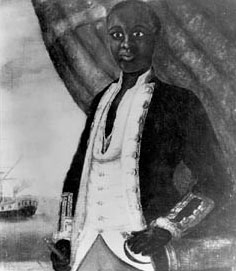|
| |
Slaves in the Continental Army
At the time of the American Revolution there were nearly 450,000 enslaved African Americans in the thirteen colonies. The colonists depended on the slaves for both their economic and social structure in the new nation. Although Congress and General Washington initially avoided the use of African Americans as soldiers, they were eventually active participants due to a shortage of regular troops.
|
| |
In January 1776, Washington allowed the use of free blacks with prior military experience which was eventually extended to the enlistment to all free blacks regardless of military experience.1
By 1777, Congress had authorized enrollment to all blacks; free and slave in order to fulfill the army's manpower quotas. Despite this, the only southern state that allowed African Americans to participate was Maryland. By 1779, Congress offered $1,000 to masters for each slave in South Carolina and Georgia that was provided to the army, but both states refused.2
Consequently, most of the 5,000 black soldiers that served on the patriot side during the Revolutionary War were from the northern states. During the Battle of Bunker Hill on June 17, 1775, approximately 5 percent of the American soldiers were black. In New England, many of the blacks served in integrated units and received equal pay as whites. Even so, no African American was to receive a higher rank than corporal.3
|

|
| |
Next >
|
| |
| |
|



